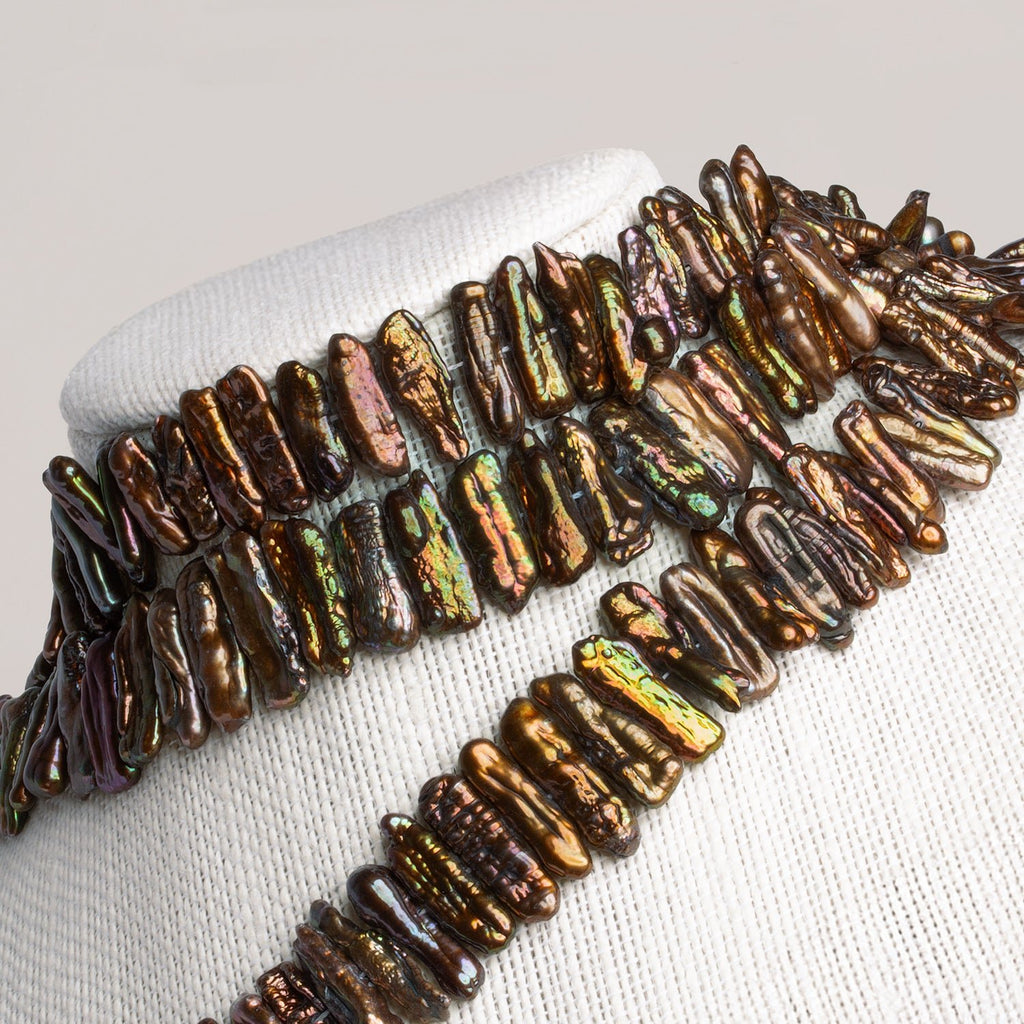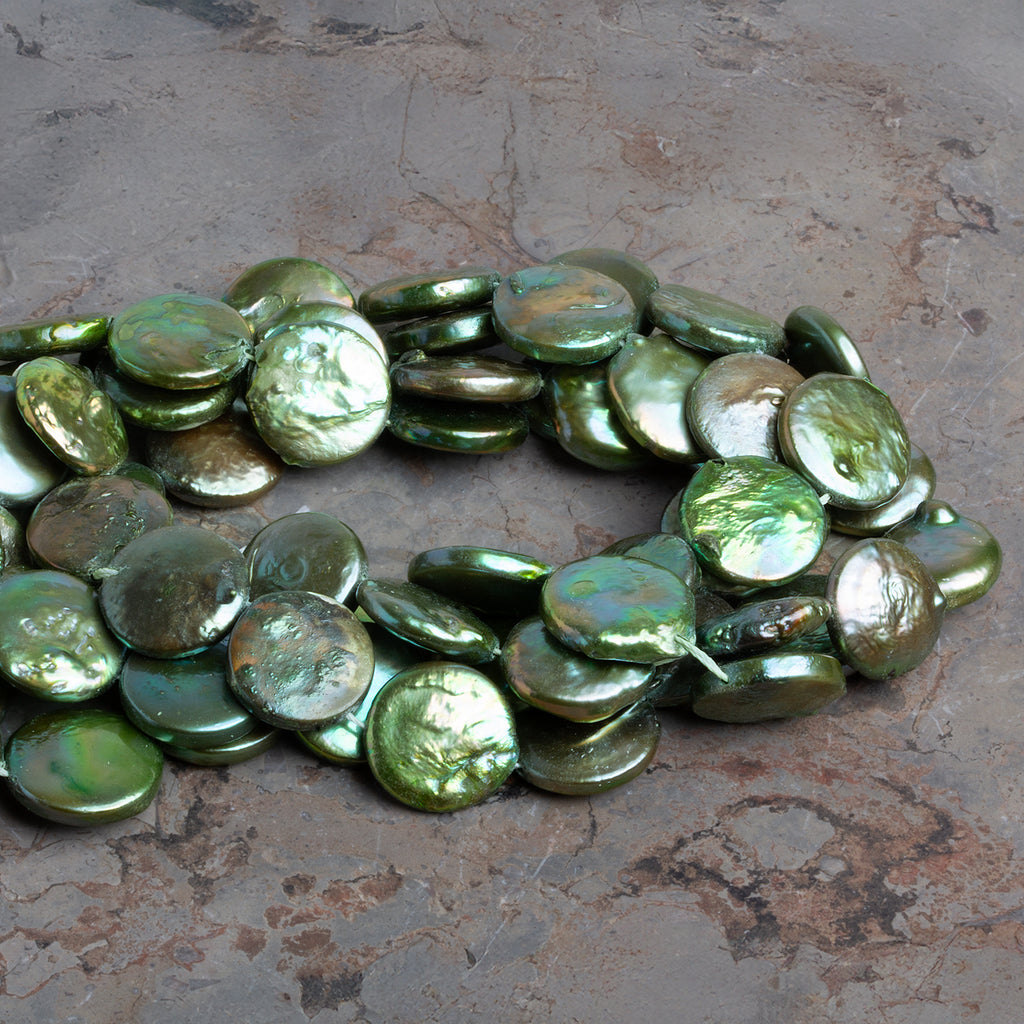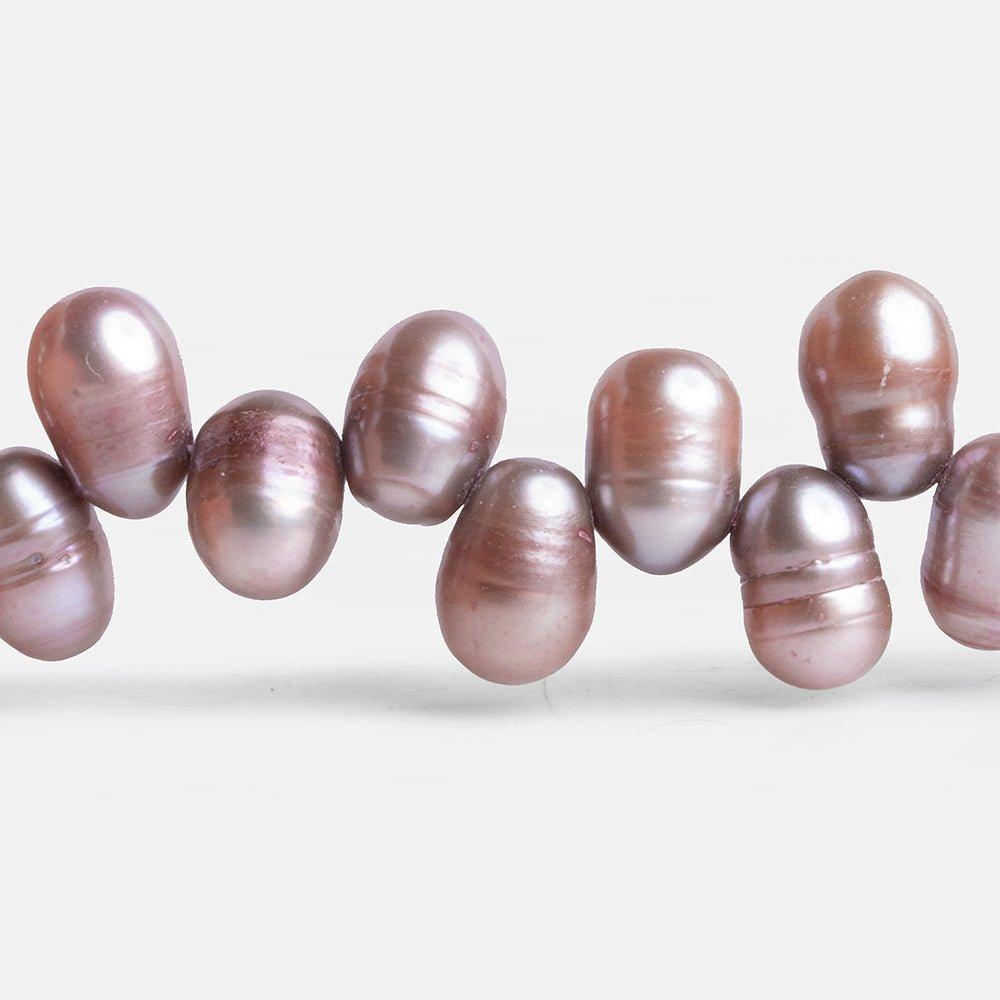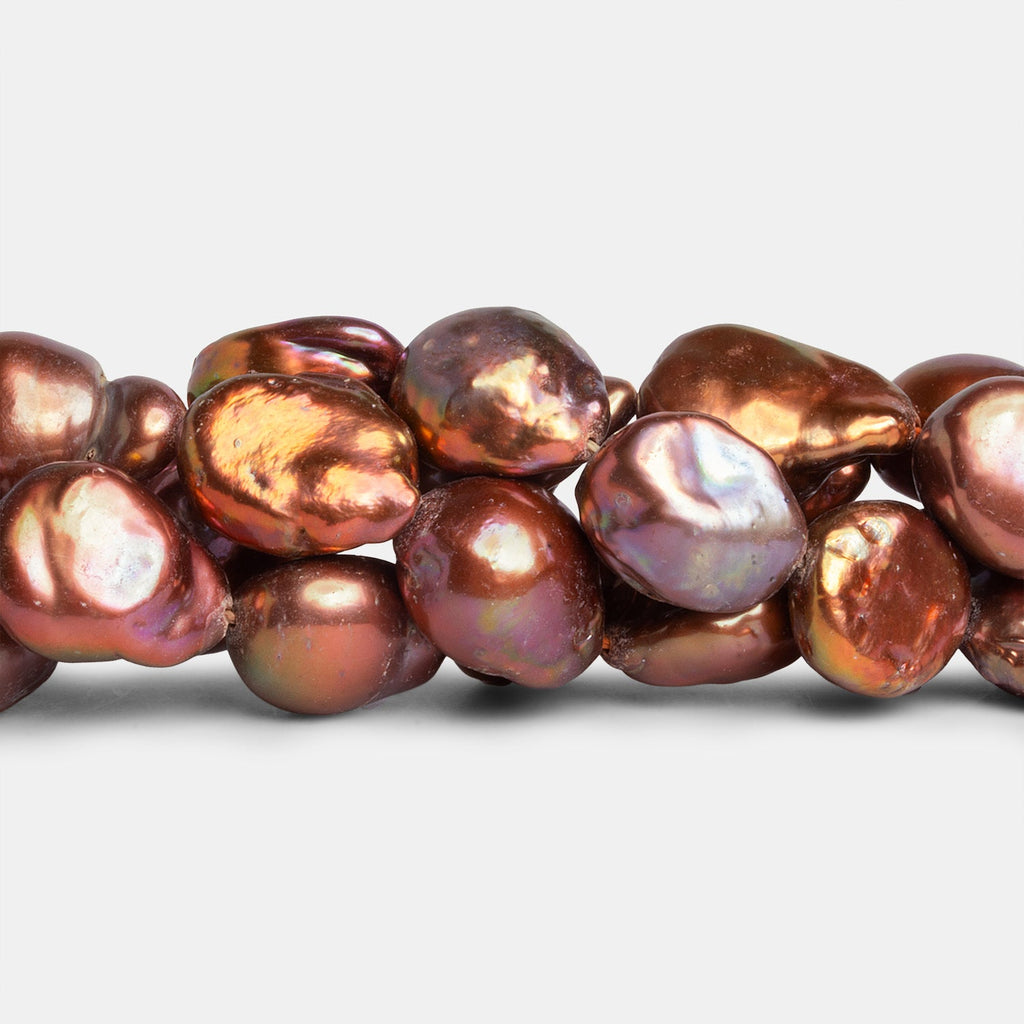History of Cultured Freshwater Pearls
At one time, Scotland was famous for freshwater pearl necklaces, but the Holarctic of mussels that produced them are almost extinct. Japan was the first country to cultivate freshwater pearls, but the species of mussel they were using began to die off. There were attempts to reinvigorate the industry using other mussel hybrids. In the United States, John Latendresse began to produce pearls in Tennessee for a time, but all that remains of that venture is a tourist attraction. China currently has a corner on the market. They originally used the cockscomb pearl mussel (Cristaria plicata), which produced large numbers of small, low quality pearls often referred to as “Rice Krispie Pearls.” About ten years ago, the Chinese pearl producers began using the triangle shell mussel (Hyriopsis cumingii), a species that produces fewer pearls but of much better quality.
Pearl Farming
At a freshwater pearl farm, the mussels are grafted, or surgically implanted with pearl-producing mantle tissue. The mussel forms a sac at each graft point and the cells in this area begin to secrete nacre, a calcium carbonate compound that builds up over time to produce a pearl. Each mussel produced 24 to 32 pearls, and it takes 6 or 7 years for the pearls to be ready to harvest.
Processing the Pearls
Freshwater pearls are usually purchased as a lot before they are harvested. After harvest, the pearls are cleaned and sorted and separated by size and shape. Then they are shipped to a factory where they are treated in warm and cold chemical baths in preparation for dyeing or bleaching. Finally, the pearls are drilled and polished and strung onto strands. The strands are matched into groups of 5 to 10 known as hanks, which are then ready for shipping.
Sizes, Shapes and Colors
Freshwater pearls are famous for their whimsical shapes and their beautiful colors. They are available in many shapes, including potato (almost round), coin, oval, button, biwa (stick), baroque, oval, square, round, rice and melon seed or pear shape. Some freshwater pearls are naturally colored pastels, but they can also be dyed beautiful colors like red, salmon, peacock, lavender, purple, blue, green and various metallics. Copper freshwater pearls look particularly striking when strung with large, chunky nuggets of earthy jasper or chrysoprase. Pale pink pearls together with red garnets or dark pink rhondonite would make beautiful freshwater pearl necklaces.
Best Value
We at the Bead Traders know the bead business and quality, and after ten years as an online bead seller, we definitely know value. We pledge to provide you with the best beads available while saving you money. Let the Bead Traders stock you up on freshwater pearls and other bead-making supplies.














